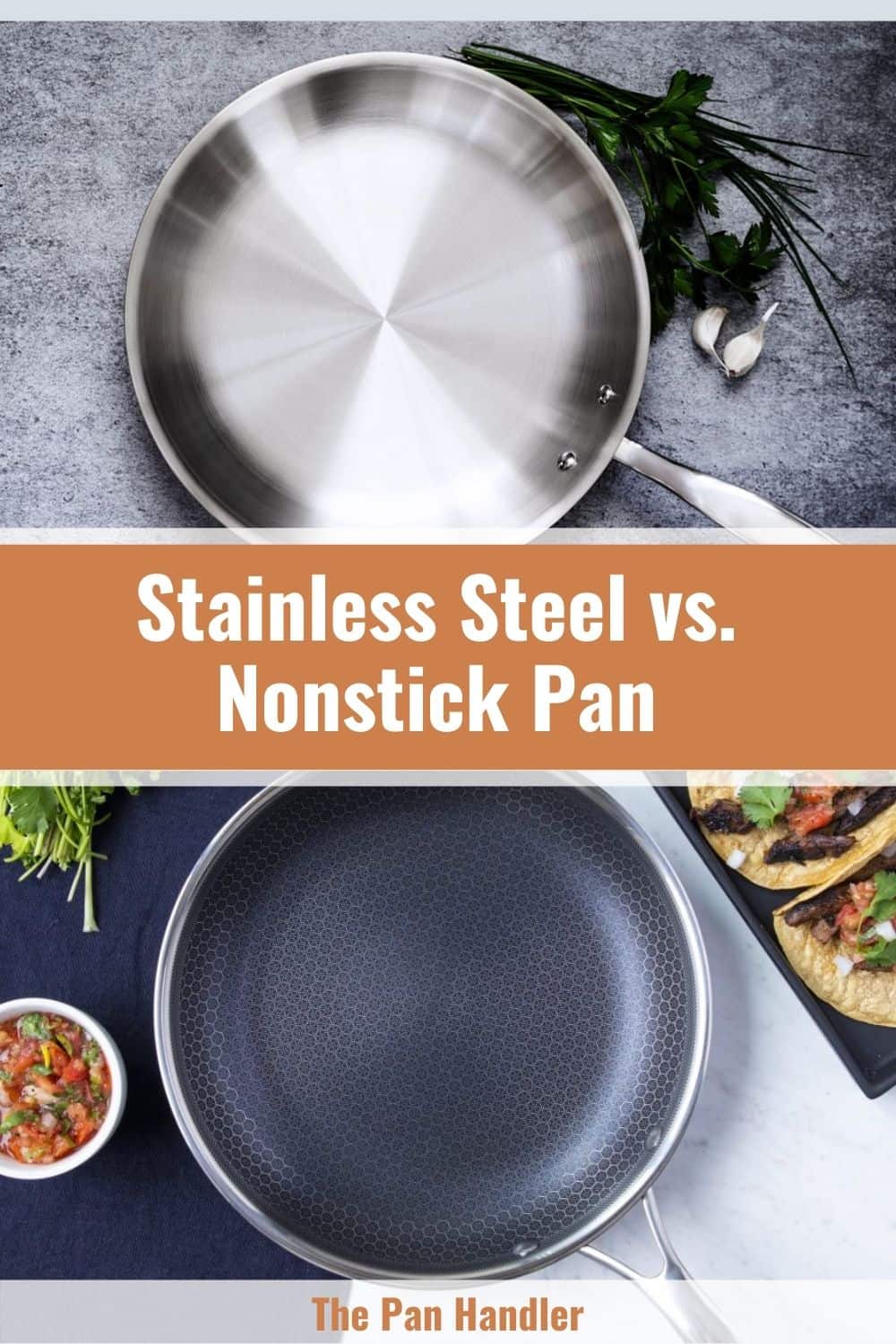Many people are confused about whether they should go for a non-stick pan or stainless steel pan when buying cookware. Both pans have different qualities, which determine the qualities of your activities in the kitchen. To make the right decision, you need to understand the characteristics of both pans and how best they suit your culinary preferences.
Strengths And Weaknesses of Stainless Steel Pans
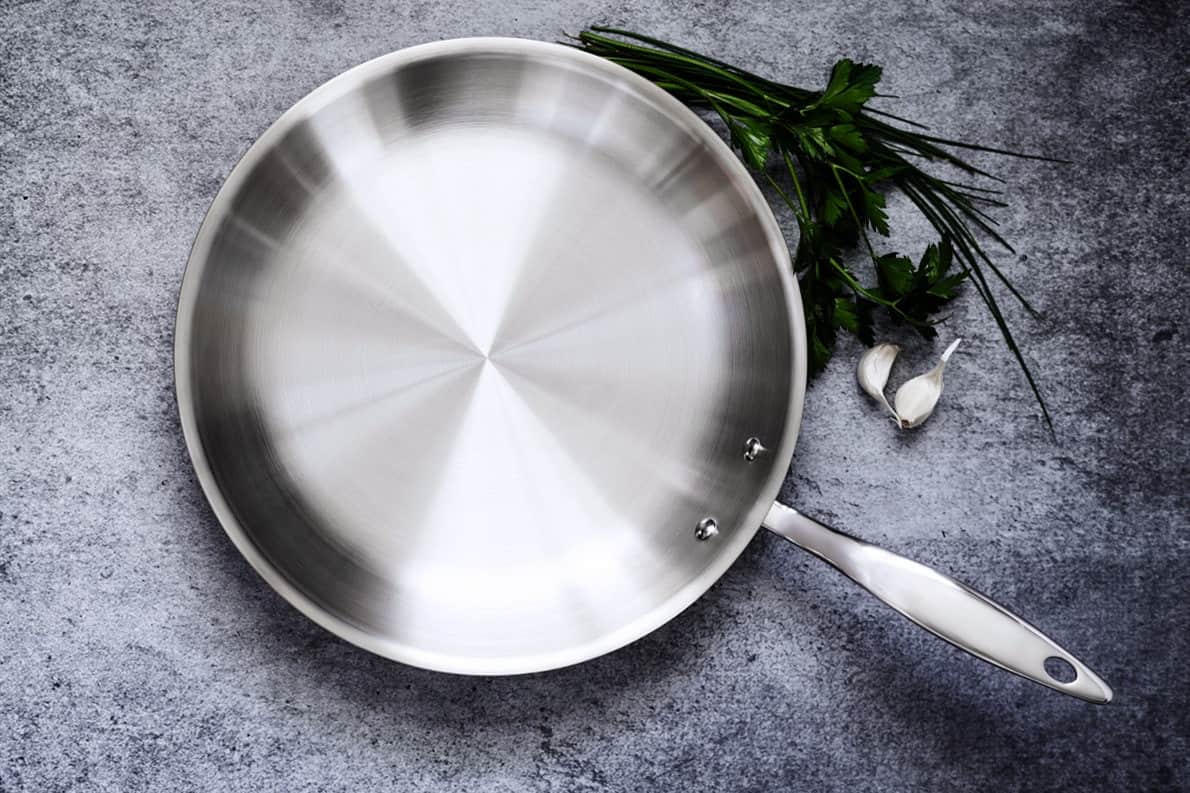
Stainless steel pans are often made with iron, chromium, nickel, carbon, titanium, copper, etc. Despite the multiple layers of metals that a stainless steel pan has, only the stainless steel layer comes into contact with your food during cooking.
Strengths
Stainless steel pans are more durable compared to other pans because they have no coating on their surfaces and are made with more durable materials. They also provide an even heat distribution. They can withstand high heat without any of their properties getting damaged. If you want to caramelize your foods, stainless steel pans are excellent options.
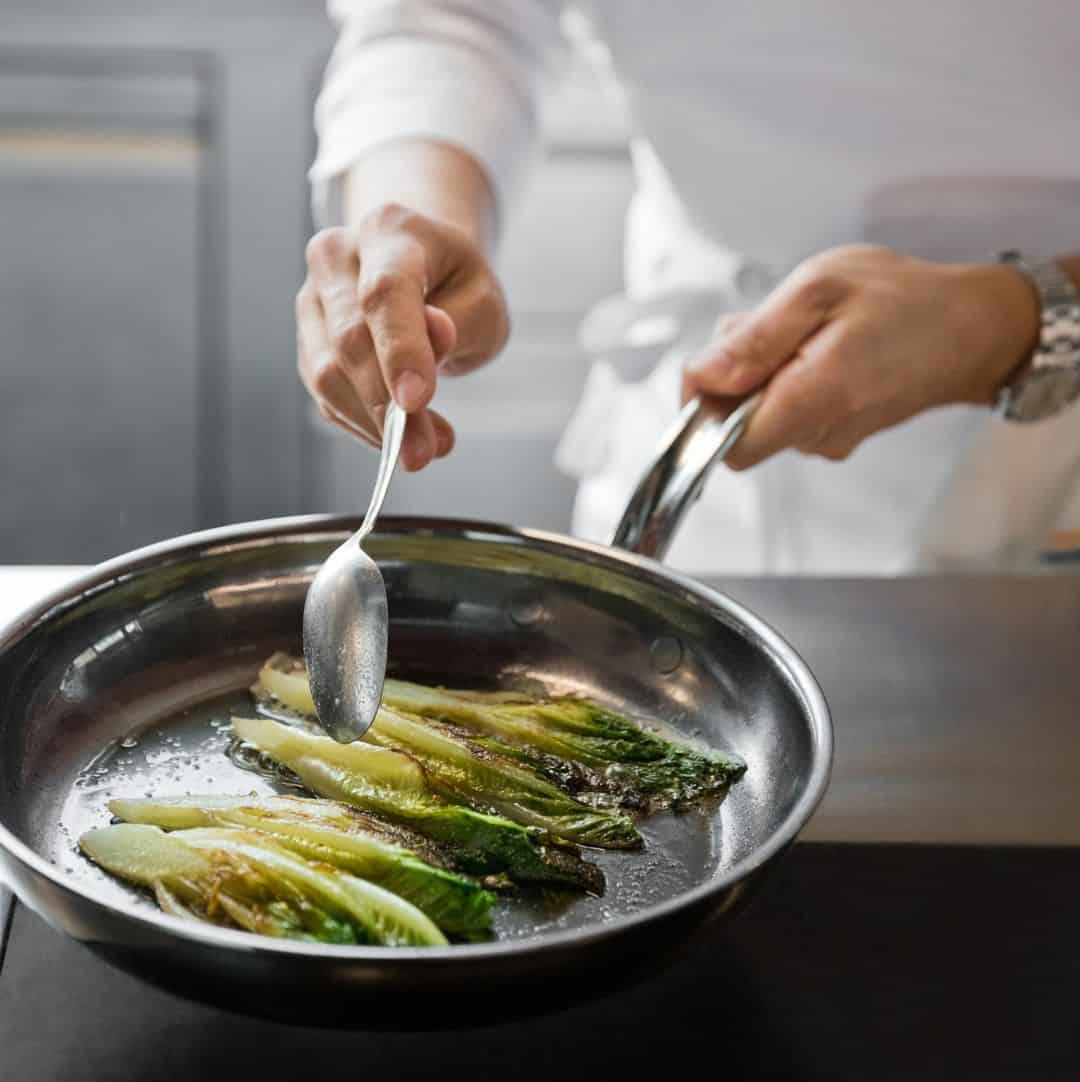
Weaknesses
However, stainless steel pans have their drawbacks. For instance, they are not non-stick. As such, they aren’t suitable for cooking delicate foods. Besides, their cleanup is often tasking, especially if there are burnt food residues on the cooking surface.
They are heavy too, so handling them in the kitchen is stressful. You also have to apply oil on the cooking surface before you cook to prevent your food from sticking. This may encourage the use of more cooking fat, which isn’t beneficial to your health if used excessively. [How to Use Stainless Steel Pan Without Sticking]
Strengths And Weaknesses of Non-stick Pans
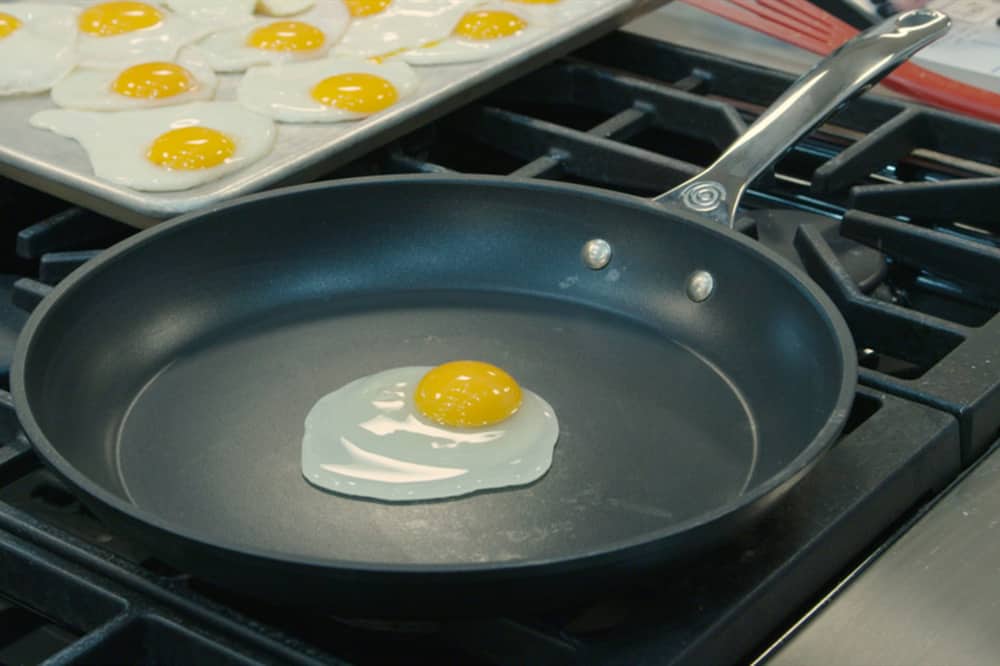
Non-stick pans typically have a metal base, like aluminum or carbon steel, and are coated with a non-stick material such as silicone, ceramics, or other polymers. Their cooking surfaces are coated with a thin-like layer that prevents food from sticking to them. They are convenient and easy to clean. They also save you time and energy.
Strengths
Non-stick pans have non-stick properties, which means food doesn’t stick to their cooking surfaces nor does it burn. Also, you don’t have to apply oil on the cooking surface or preheat the pan before you cook. This is because non-stick pans conduct heat quickly and require less fat, which promotes healthier cooking. Since your food doesn’t burn or stick, clean-up is always easy.
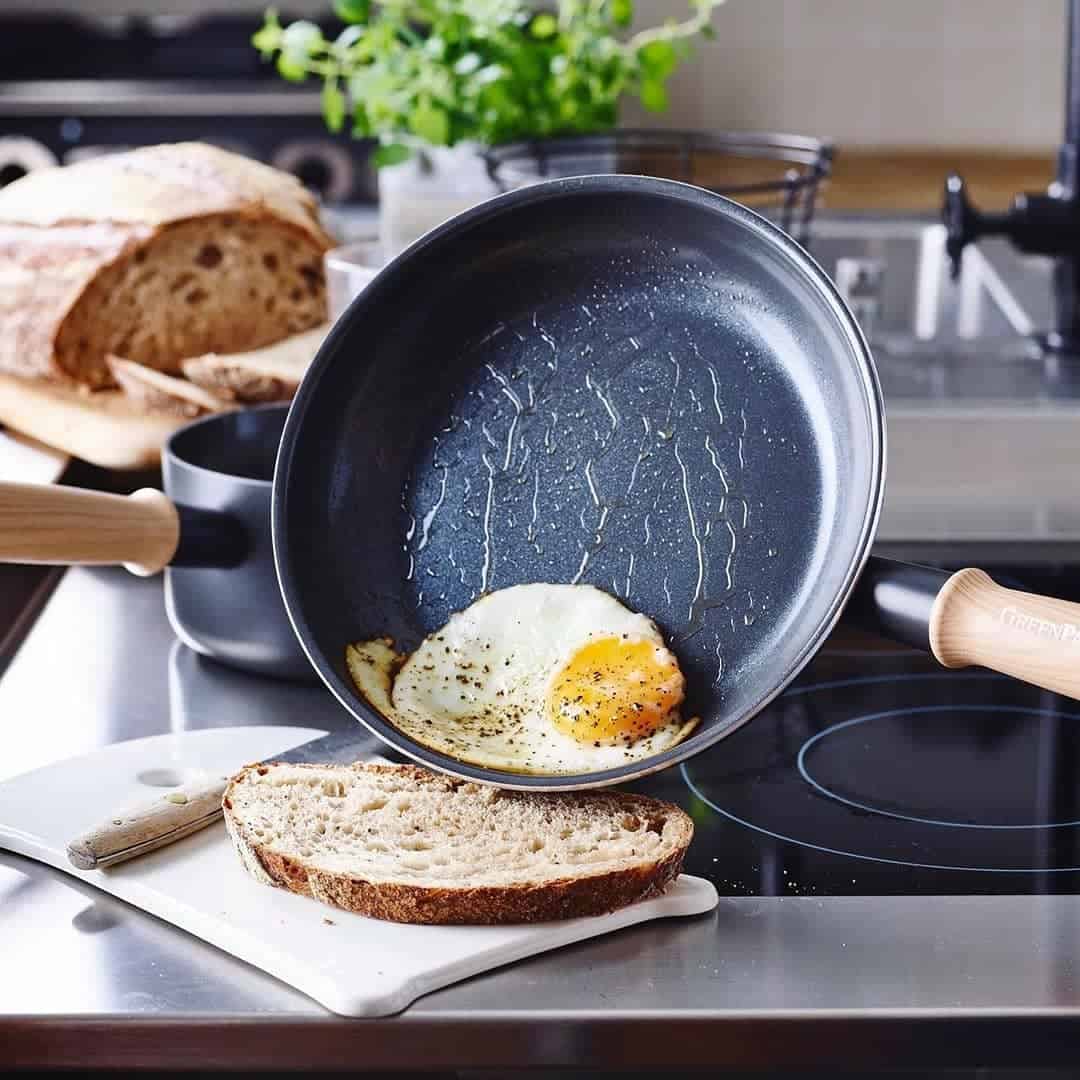
Weaknesses
On the other hand, non-stick pans aren’t without fault. They can’t be exposed to high heat because their non-stick coating can melt and emit dangerous fumes. Most non-stick pans aren’t dishwasher-safe.
you must confirm if the manufacturer recommends cleaning the pans in a dishwasher before you go ahead. Also, you can’t use metal utensils with non-stick pans as their cooking surfaces aren’t completely scratchproof.
Similarities Between Stainless Steel Pan and Non-stick Pan
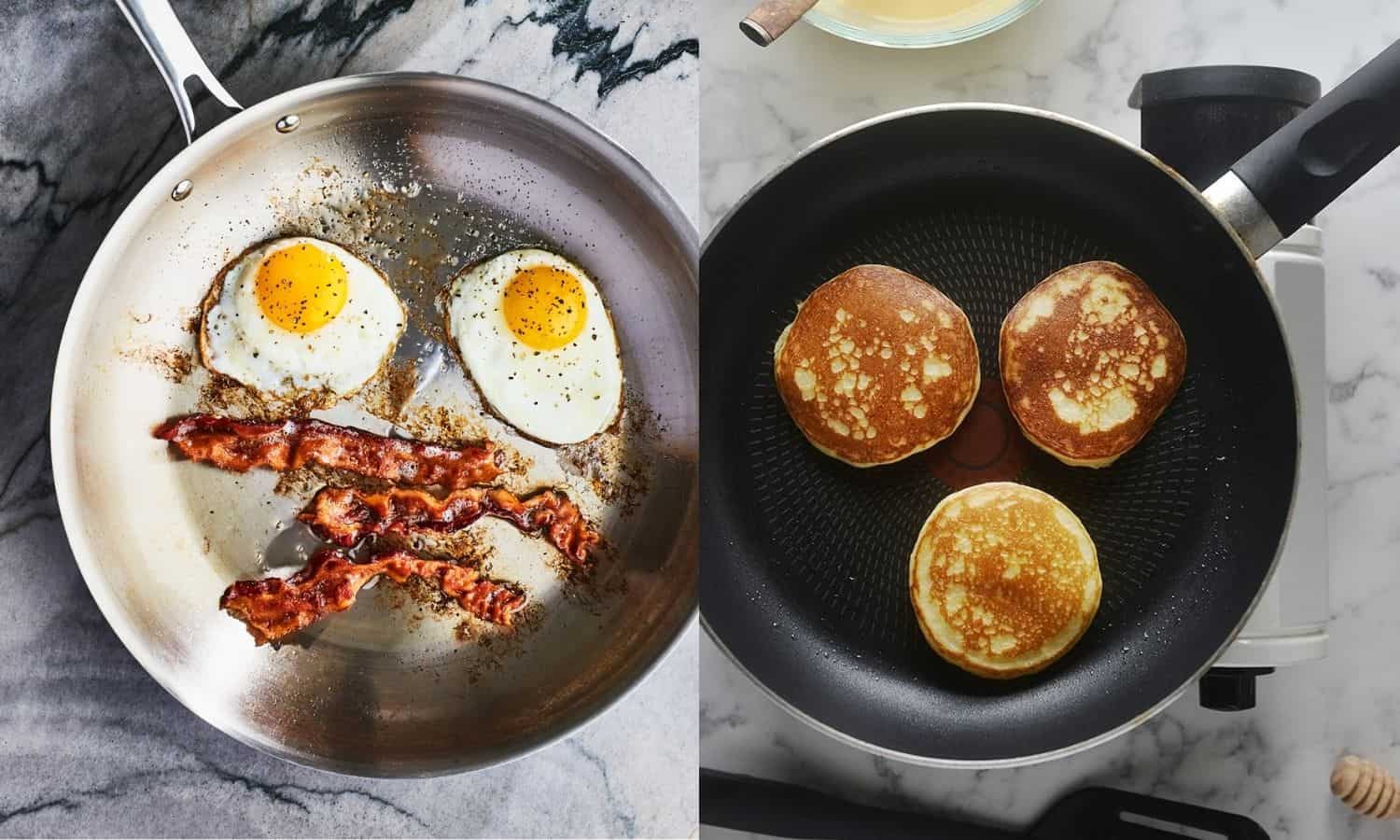
Both stainless steel and nonstick pans share some similarities. Some of them are:
Safe
Both stainless steel and nonstick pans are safe to use. Stainless steel pans don’t have coatings made from dangerous chemicals on their cooking surfaces. Also, they don’t leach metals into your food. Similarly, the non-stick coating of non-stick pans is made from safe materials such as ceramic, etc.
Manufacturers of non-stick cookware no longer use dangerous chemicals like PFOA during production as they have been banned by law in most countries. Therefore, both pans have no impact on the nutritional value or taste of your food. They preserve the natural flavors of your food.
Compatible with different cooktops
Both stainless steel and nonstick pans are compatible with different cooktops as well. You can use them on an electric stove or gas cooktop, in the oven, or an induction burner. As long as both cookware have magnetic properties, they will work perfectly on induction cooktops. With both pans, you can adapt to any type of cooktop in your kitchen.
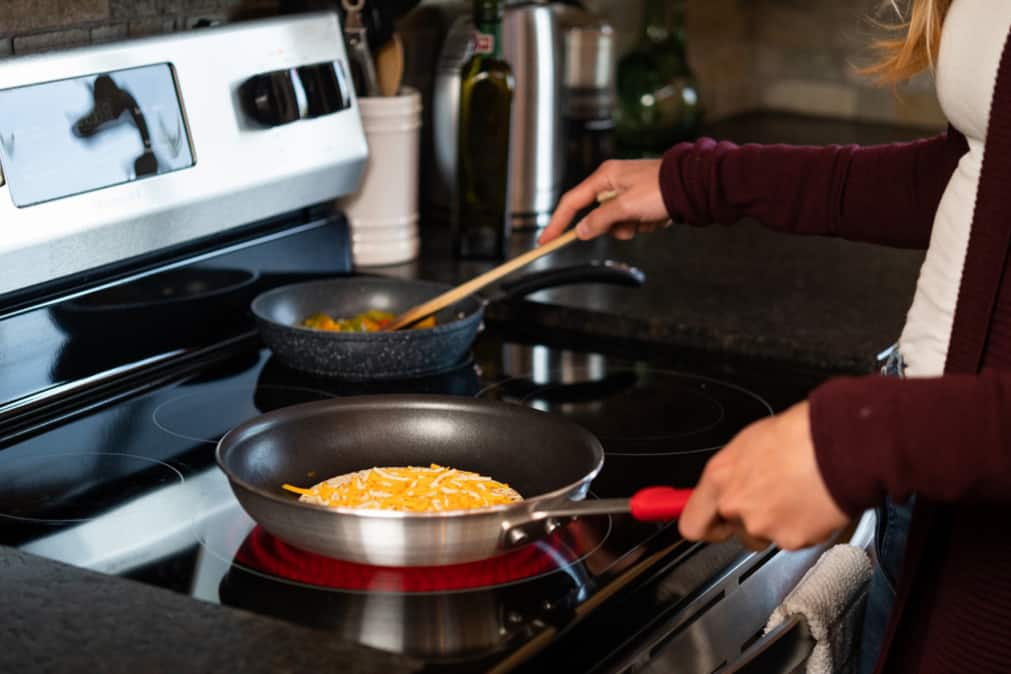
Heat transfer
Both pans have even heat transfer, so the chances of your food becoming spotty are low. For instance, non-stick pans are made with metals like copper, aluminum, which are good heat conductors and ensure even transfer of heat across the cooking surface.
Even though stainless steel isn’t a good heat conductor, the exterior of a stainless steel pan is made with metals like copper, etc., which improves its heat conductivity.
Durability
Both pans are durable, but only if you buy high-quality ones. For instance, stainless steel is almost indestructible; even in extreme conditions, it maintains its state. Also, good non-stick pans are durable.
What determines the durability of cookware is the materials they are made with. For instance, aluminum lasts longer than ceramic. Whether you’re buying a non-stick pan or stainless steel pan, consider the quality of their materials.
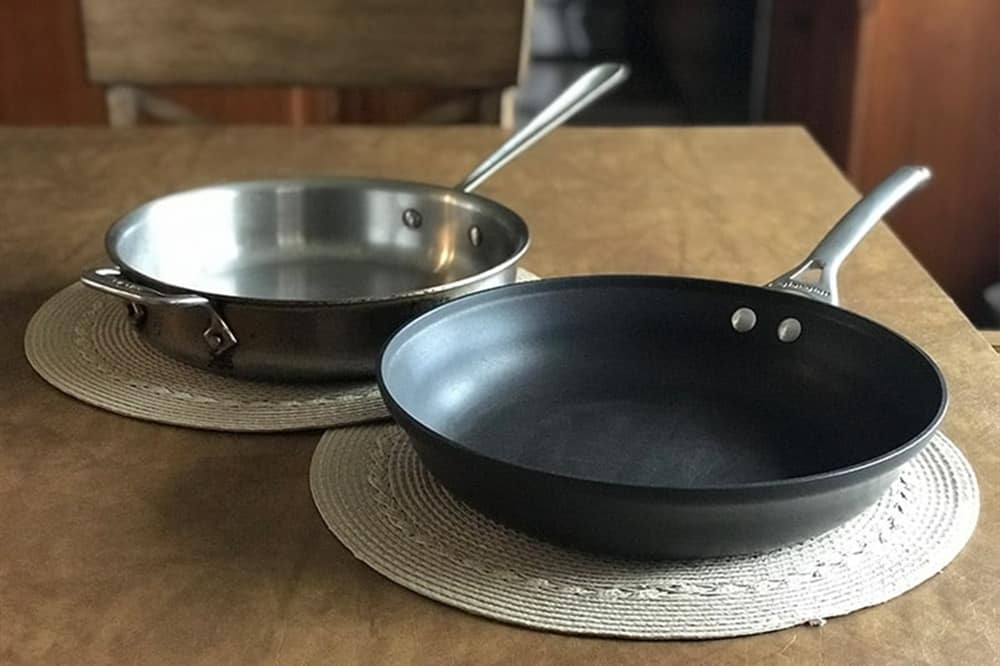
Appearance
In addition, both pans are beautifully designed. Either you place them on your cooktops or hang them on a rack; they increase the aesthetic value of your kitchen.
Differences Between Non-stick Pan and Stainless Steel Pan
The differences between both non-stick and stainless steel pans are essential because they are what you consider when making your choice.
Stickiness
Non-stick pans are naturally non-stick. For this reason, they are easy to clean as food rarely gets burnt in them. However, stainless steel pans aren’t non-stick. It isn’t uncommon for your food to get stuck in them. This makes cleanup difficult. Sometimes, you have to soak the pans or use agents like baking soda, salt, etc., to scrub off the food residues.
Preheating
Most non-stick pans don’t need to be preheated or oiled before you start cooking as they conduct heat quickly. In fact, you shouldn’t place a non-stick pan on the heat if your food isn’t ready or nearby.
On the other hand, stainless steel pans need to be oiled and preheated if you don’t want your food to stick. Preheating expands the stainless steel pans and closes up their pores, thereby making the cooking surfaces very smooth and, to some extent, non-stick.
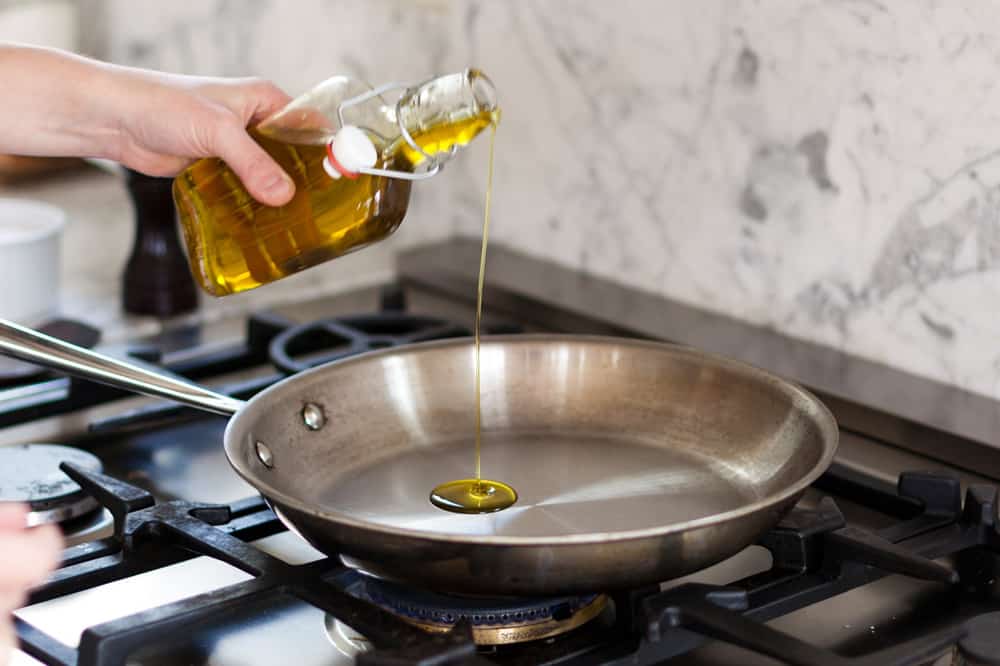
Durability
While both types of pans have their strengths, stainless steel pans generally outperform non-stick pans in terms of durability. For instance, stainless steel pans don’t warp or bend, unlike non-stick pans, which can if you’re aren’t careful. However, some manufacturers have made more robust non-stick pans, but these pans aren’t as indestructible as stainless steel pans.
Dishwasher-safe
Non-stick pans aren’t dishwasher-safe, except if the manufacturer says so. Exposing them to moisture causes them to rust. This is why most experts recommend that you hand wash your non-stick pans.
Conversely, you can put your stainless steel pans in the dishwasher. You can even soak them in water for a few minutes to remove harsh food residues. This is because they contain chromium, a metal that prevents rust.
High temperature
Non-stick pans don’t do well with high temperature because it breaks down the non-stick coating on the cooking surfaces. You should always set your stove or oven to low or medium heat when using non-stick pans. However, stainless steel pans are made to withstand extremely high temperatures. They are best for cooking foods that require high heat.
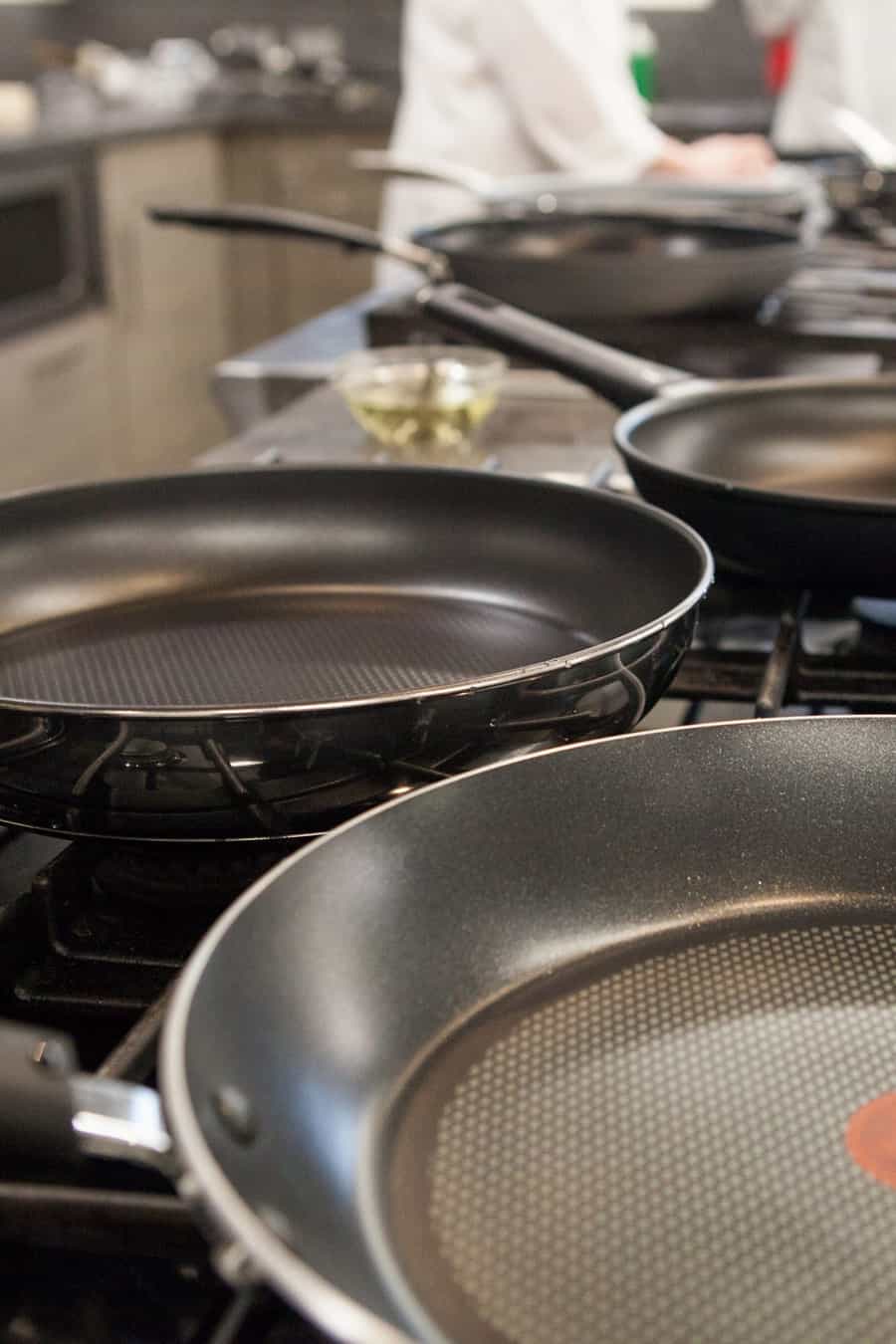
What to Consider When Choosing Between Nonstick and Stainless Steel Pans
Both pans have their strengths and weaknesses, but what you go for is determined by which plan serves you best. Here are some factors to consider when making the decision.
Reactivity
Non-stick pans don’t do well with acidic foods such as tomato sauce, etc. They react by imparting strange, metallic tastes into your food. However, stainless steel pans don’t react to any food, either acidic or not. Therefore, if you will be cooking acidic dishes, non-stick pans aren’t the best option. [Nonreactive Pan: Everything You Need To Know]
Nature of food
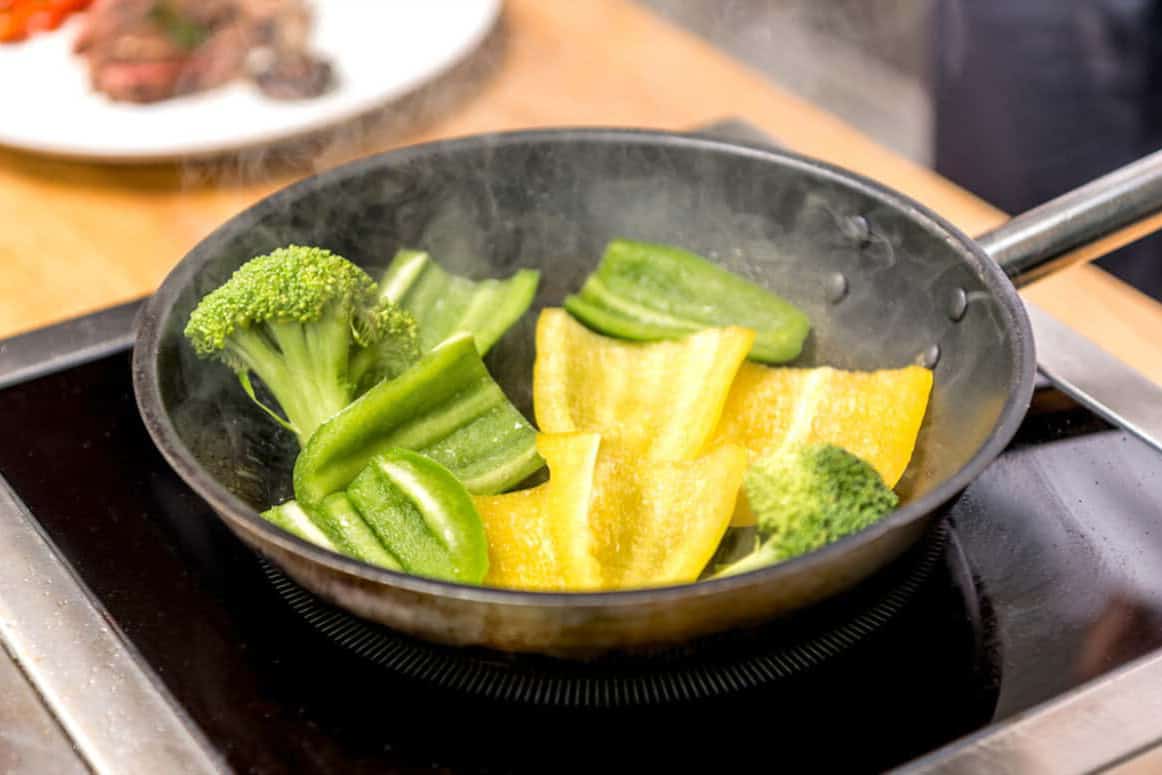
Non-stick pans are suitable for cooking delicate foods such as stir-frying vegetables, etc. Such foods won’t get stuck due to the pan’s non-stick coating. However, you can’t use non-stick pans to brown your food.
That would require high heat, which they are allergic to. On the other hand, you can use stainless steel pans to caramelize your food or cook dishes that require high heat. It would help if you considered the nature of the food you’ll be cooking before shopping for cookware.
Maintenance
This is another prominent factor you should consider. If you don’t have the time to maintain your cookware, you shouldn’t buy non-stick pans because they require special use and care. For instance, you must clean them gently and season them regularly.
You can’t store them haphazardly if you want to preserve their appearance, whereas stainless steel pans need no special care. You can scrub off tough food residues with scouring pads. You don’t need to season them to maintain their appearance. If you have little or no time to look after your kitchen items, consider buying a stainless steel pan.

Durability
Finally, you should consider how long each pan will last. Stainless steel pans last long; they can even be handed down from one generation to another. However, non-stick pans usually don’t last beyond five years. Only the high-quality ones last an extra one or two years. You have to keep replacing your non-stick pans every five years, unlike stainless steel pans. To understand better when to replace your non-stick pans, you can refer to our guide on [When To Throw Away Non-Stick Pans].
Summary
What you choose between non-stick and stainless steel pans depends on your culinary needs and preferences. If you don’t want to be replacing your cookware often because you’re operating on a low budget, then you should buy stainless steel pans, but if you want a pan that is easier to clean, non-stick pans are the best.
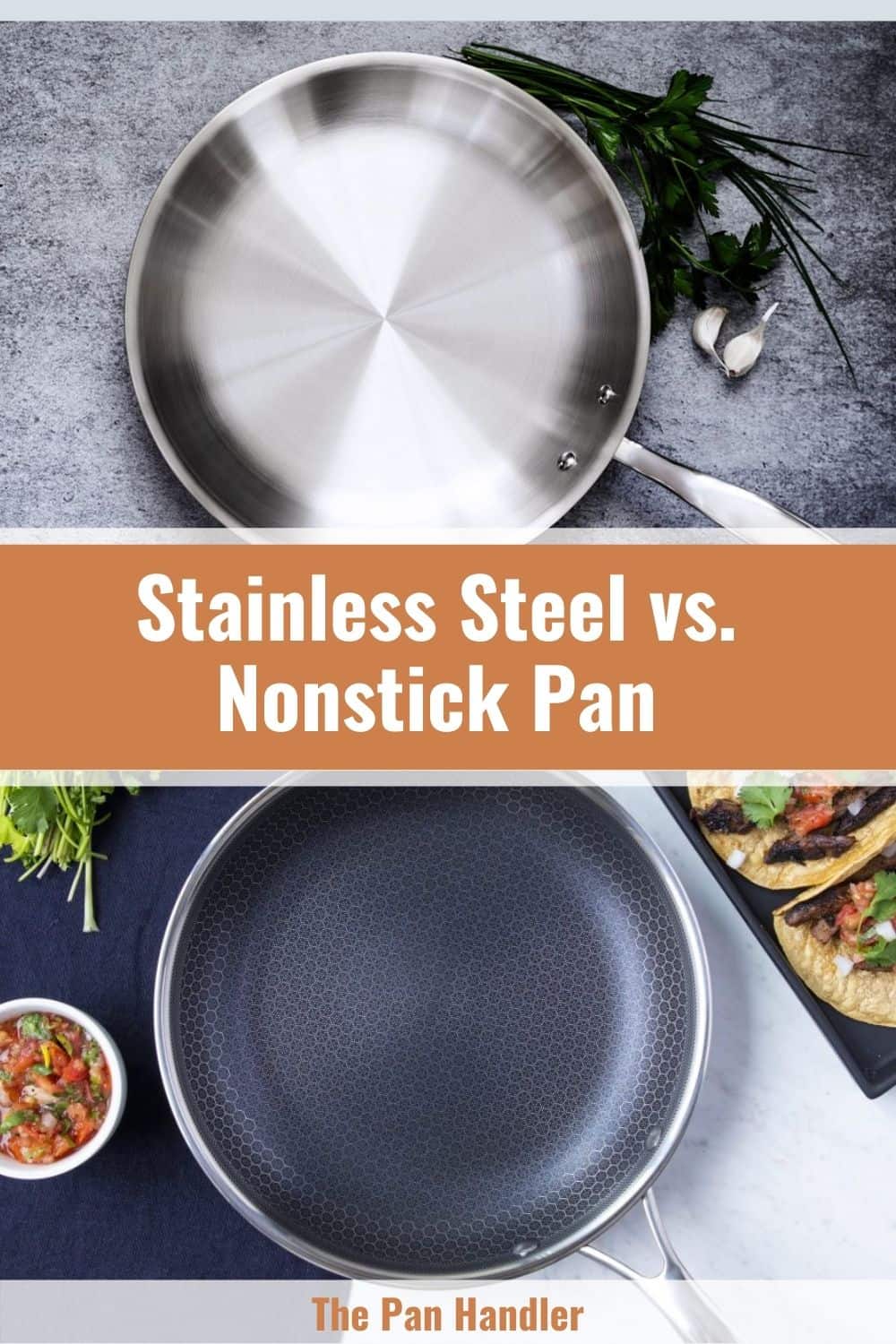

Michael Johnson is the founder of Pan Mastery, Inspired by his blacksmith grandfather’s legacy has a deep appreciation for hand-crafted pots and pans, he provides invaluable guides, reviews, and recipes to enhance your culinary journey.

